Posted on February 23rd, 2019 by Mary Lord
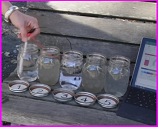 Middle school students explore how fertilizers and other solids affect water quality by building and using sensors to measure the electrical conductivity of water samples. They then create data tables and investigate possible sources of pollutants using digital visualization tools.
Middle school students explore how fertilizers and other solids affect water quality by building and using sensors to measure the electrical conductivity of water samples. They then create data tables and investigate possible sources of pollutants using digital visualization tools.
Read More
Filed under: Class Activities, Grades 6-8, Grades 9-12, K-12 Outreach Programs, Lesson Plans | Comments Off on Measuring Water Quality to Assess Human Impact
Tags: arduino, Class Activities, data analysis, electrical circuits, Electrical Engineering, Environmental Engineering, Excel, Grades 6-8, HackingSTEM Microsoft, hydrology, Lesson Plan, Pollution, sensors, water quality
Posted on April 6th, 2018 by Mary Lord
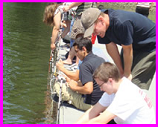 Sensors are in everything from smart phones to corn fields. They also can be a powerful and engaging tool to teach STEM. SENSE IT, a free, research-based curriculum, involves students in hands-on learning about their local environment by constructing, deploying, and interpreting data from a network of water-quality sensors.
Sensors are in everything from smart phones to corn fields. They also can be a powerful and engaging tool to teach STEM. SENSE IT, a free, research-based curriculum, involves students in hands-on learning about their local environment by constructing, deploying, and interpreting data from a network of water-quality sensors.
Read More
Filed under: Grades 6-8, Grades 9-12, K-12 Outreach Programs, Lesson Plans, Web Resources | Comments Off on Sense It!
Tags: circuits, Curriculum, data analysis, Environmental Engineering, Environmental science, Grades 6-8, Grades 9-12, integrated STEM, Internet Resources, iSTEM, Lesson Plan, Liesl Hotaling, SENSE IT, sensors, Teacher Resources, water quality, Web Resources
Posted on April 6th, 2018 by Mary Lord
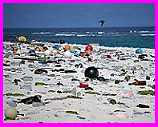 Students learn about the Great Pacific garbage patch, research the extent and impact of plastics pollution on oceans, and present that information as a short, eye-catching newsletter suitable to hand out to fast-food restaurant customers.
Students learn about the Great Pacific garbage patch, research the extent and impact of plastics pollution on oceans, and present that information as a short, eye-catching newsletter suitable to hand out to fast-food restaurant customers.
Read More
Filed under: Class Activities, Grades 6-8, Lesson Plans | Comments Off on Ahoy! Plastic in the Ocean
Tags: Class Activities, Common Core State Standards, data analysis, ecosystem, Environmental Engineering, environmental stewardship, GIS, Grades 6-8, graphic design, great ocean garbage dump, Lesson Plan, literacy, Mapping, Marine Science, Pollution, Research, STEAM, Videos, water cycle, writing
Posted on May 30th, 2017 by Mary Lord
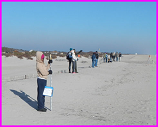 High school students working in groups of three to four learn about the primary causes and impacts of coastal erosion, and use elevation data to construct profiles of a beach over time or to compare several beaches, make inferences about the erosion process, and discuss how humans should respond.
High school students working in groups of three to four learn about the primary causes and impacts of coastal erosion, and use elevation data to construct profiles of a beach over time or to compare several beaches, make inferences about the erosion process, and discuss how humans should respond.
Read More
Filed under: Class Activities, Grades 9-12, Grades 9-12, Grades 9-12, Lesson Plans | Comments Off on Who Moved the Beach?
Tags: beach, Civil Engineering, Class Activities, coastal erosion, coastal management, data analysis, Earth Science, Environmental Engineering, erosion, Grades 9-12, jetties, Lesson Plan, NOAA, USGS
Posted on April 20th, 2017 by Mary Lord
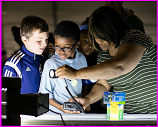 Students in grades 6-7 build light meters and investigate the nature, sources, and levels of light in their classroom. learning about the adverse effects of artificial light on humans, animals, and plants as well as the engineering concepts of sensors and lumen and lux (lx) illuminance units. They also learn how to better use light and save energy as well as some of the technologies designed by engineers to reduce light pollution and energy waste.
Students in grades 6-7 build light meters and investigate the nature, sources, and levels of light in their classroom. learning about the adverse effects of artificial light on humans, animals, and plants as well as the engineering concepts of sensors and lumen and lux (lx) illuminance units. They also learn how to better use light and save energy as well as some of the technologies designed by engineers to reduce light pollution and energy waste.
Read More
Filed under: Class Activities, Grades 6-8 | Comments Off on Measuring Light Pollution
Tags: Class Activities, Computer Science, data analysis, Electrical Engineering, Environmental Engineering, Environmental science, Grades 6-8, graphing, LEGO MINDSTROMS, Light pollution, lumens, lux, Mathematics, measuring, sensors
Posted on February 16th, 2017 by Mary Lord
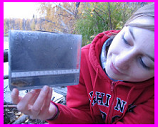 Middle school students learn that ordinary people like themselves can make meaningful contributions to science by reviewing examples of citizen science projects on Zooniverse, an interactive website. They then form “engineering teams” to brainstorm projects for their own community and design conceptual interactive websites that could organize and support them.
Middle school students learn that ordinary people like themselves can make meaningful contributions to science by reviewing examples of citizen science projects on Zooniverse, an interactive website. They then form “engineering teams” to brainstorm projects for their own community and design conceptual interactive websites that could organize and support them.
Read More
Filed under: Class Activities, Grades 6-8, Grades 6-8, Lesson Plans | Comments Off on Citizen Science
Tags: Citizen Science, Class Activities, data analysis, environment, Grades 6-8, Lesson Plan, Website
Posted on January 29th, 2016 by Mary Lord
 Teams of high school students use their understanding of projectile physics and fluid dynamics to calculate the water pressure in squirt guns by measuring the range of the water jets. They create graphs to analyze how the predicted pressure relates to the number of times they pump the water gun before shooting.
Teams of high school students use their understanding of projectile physics and fluid dynamics to calculate the water pressure in squirt guns by measuring the range of the water jets. They create graphs to analyze how the predicted pressure relates to the number of times they pump the water gun before shooting.
Read More
Filed under: Class Activities, Grades 9-12 | Comments Off on A Shot Under Pressure
Tags: Bernoulli, calculations, Class Activities, data analysis, fluid dynamics, forces and motion, Grades 9-12, graph, Mathematics, measurement, Physics, pressure, projectile, Super Soaker, variables, velocity, water gun
 Middle school students explore how fertilizers and other solids affect water quality by building and using sensors to measure the electrical conductivity of water samples. They then create data tables and investigate possible sources of pollutants using digital visualization tools.
Middle school students explore how fertilizers and other solids affect water quality by building and using sensors to measure the electrical conductivity of water samples. They then create data tables and investigate possible sources of pollutants using digital visualization tools.








 Sensors are in everything from smart phones to corn fields. They also can be a powerful and engaging tool to teach STEM. SENSE IT, a free, research-based curriculum, involves students in hands-on learning about their local environment by constructing, deploying, and interpreting data from a network of water-quality sensors.
Sensors are in everything from smart phones to corn fields. They also can be a powerful and engaging tool to teach STEM. SENSE IT, a free, research-based curriculum, involves students in hands-on learning about their local environment by constructing, deploying, and interpreting data from a network of water-quality sensors.  Students learn about the Great Pacific garbage patch, research the extent and impact of plastics pollution on oceans, and present that information as a short, eye-catching newsletter suitable to hand out to fast-food restaurant customers.
Students learn about the Great Pacific garbage patch, research the extent and impact of plastics pollution on oceans, and present that information as a short, eye-catching newsletter suitable to hand out to fast-food restaurant customers.  High school students working in groups of three to four learn about the primary causes and impacts of coastal erosion, and use elevation data to construct profiles of a beach over time or to compare several beaches, make inferences about the erosion process, and discuss how humans should respond.
High school students working in groups of three to four learn about the primary causes and impacts of coastal erosion, and use elevation data to construct profiles of a beach over time or to compare several beaches, make inferences about the erosion process, and discuss how humans should respond. Students in grades 6-7 build light meters and investigate the nature, sources, and levels of light in their classroom. learning about the adverse effects of artificial light on humans, animals, and plants as well as the engineering concepts of sensors and lumen and lux (lx) illuminance units. They also learn how to better use light and save energy as well as some of the technologies designed by engineers to reduce light pollution and energy waste.
Students in grades 6-7 build light meters and investigate the nature, sources, and levels of light in their classroom. learning about the adverse effects of artificial light on humans, animals, and plants as well as the engineering concepts of sensors and lumen and lux (lx) illuminance units. They also learn how to better use light and save energy as well as some of the technologies designed by engineers to reduce light pollution and energy waste. Middle school students learn that ordinary people like themselves can make meaningful contributions to science by reviewing examples of citizen science projects on Zooniverse, an interactive website. They then form “engineering teams” to brainstorm projects for their own community and design conceptual interactive websites that could organize and support them.
Middle school students learn that ordinary people like themselves can make meaningful contributions to science by reviewing examples of citizen science projects on Zooniverse, an interactive website. They then form “engineering teams” to brainstorm projects for their own community and design conceptual interactive websites that could organize and support them.  Teams of high school students use their understanding of projectile physics and fluid dynamics to calculate the water pressure in squirt guns by measuring the range of the water jets. They create graphs to analyze how the predicted pressure relates to the number of times they pump the water gun before shooting.
Teams of high school students use their understanding of projectile physics and fluid dynamics to calculate the water pressure in squirt guns by measuring the range of the water jets. They create graphs to analyze how the predicted pressure relates to the number of times they pump the water gun before shooting.